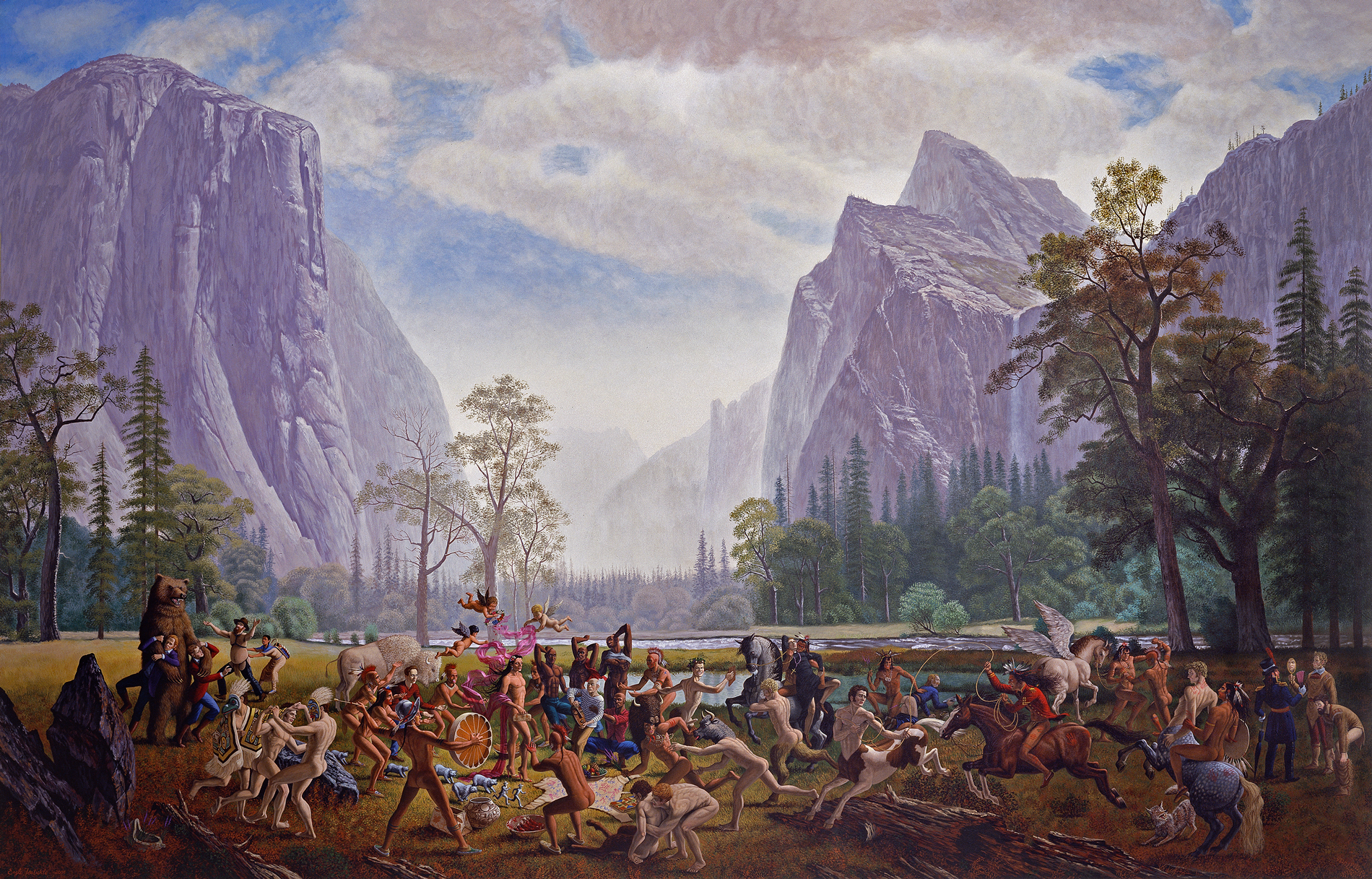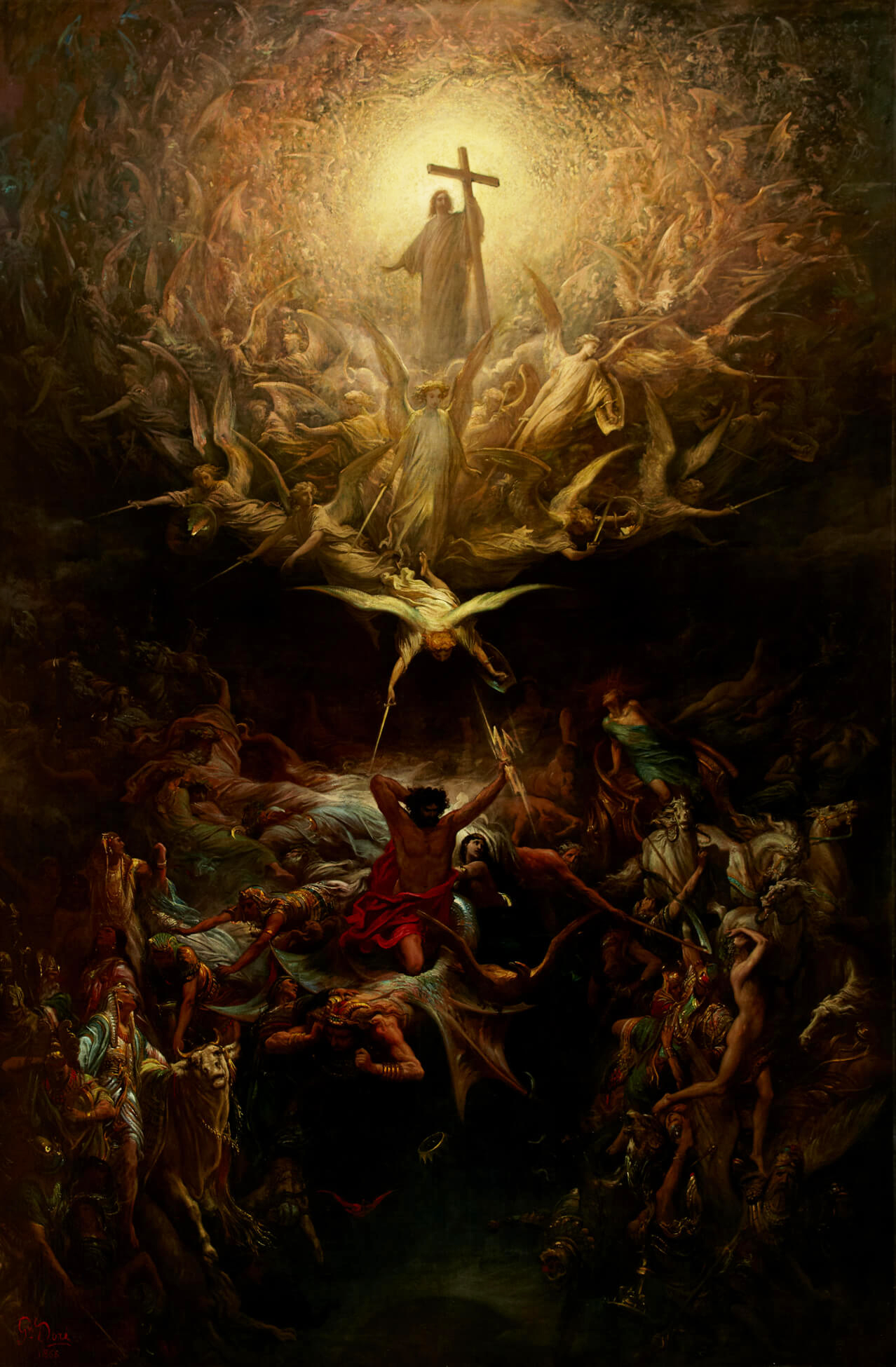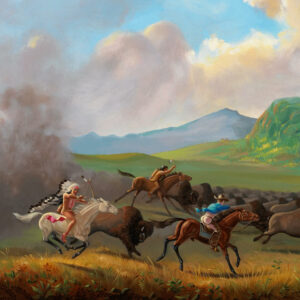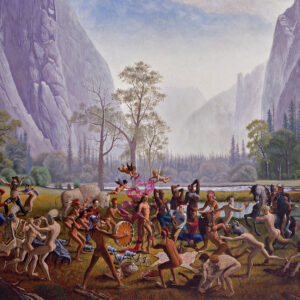The Triumph of Mischief 2007

Kent Monkman, The Triumph of Mischief, 2007
Acrylic on canvas, 213 x 335 cm
National Gallery of Canada, Ottawa

The Triumph of Mischief is a seminal work that provides a multi-layered critique of colonization. Kent Monkman’s alter ego, Miss Chief Eagle Testickle, wears only a pair of pumps and a pink shawl draped and fluttering over her arm as she strolls through a wild and detailed scene of homoerotic imagery, violence, and debauchery. Indigenous peoples, trappers, and explorers circle around her. Also making appearances are the late eighteenth-century explorers Meriwether Lewis and William Clark (depicted at the far left of the painting grappling with a bear, with Sacagawea just beyond them); artists Pablo Picasso (1881–1973) (seen just to the right of Miss Chief, wearing a striped shirt and surrounded by Black men in poses reminiscent of his Les Demoiselles d’Avignon, 1907), George Catlin (1796–1872), and Paul Kane (1810–1871) (both on the far right, wearing buckskin); and figures from Indigenous culture and prophecy, including the white buffalo, the shape-shifter who gave the gift of seven sacred ceremonies to the Lakota people.
In the foreground meadow, a variety of transgressions take place that are cultural, sexual, and social in nature. Created in response to Catlin’s Dance to the Berdash, 1835–37, which Monkman viewed at the Smithsonian Institution in Washington, D.C., in 2004, the work also nods to The Triumph of Christianity Over Paganism, 1868, a masterpiece by Gustave Doré (1832–1883), in its playful, sexually charged reversal where Miss Chief takes the central position of Christ, and pokes at iconic nineteenth-century paintings of the western frontier.
The use of sexuality in Monkman’s works is a deliberate deconstruction of the logics of power and knowledge that came with colonization. Through humour and camp, Monkman playfully draws viewers into a scene that counters preconceived notions of historical and contemporary settler-Indigenous relations. The work challenges us to envision an alternative version of the dominant narrative of North American history.
The Triumph of Mischief was the central work in Monkman’s first national solo touring exhibition, which opened at the Art Gallery of Hamilton in 2007. The National Gallery of Canada acquired it for its permanent collection the following year.

 About the Author
About the Author
 More Online Art Books
More Online Art Books
 Acknowledgements
Acknowledgements